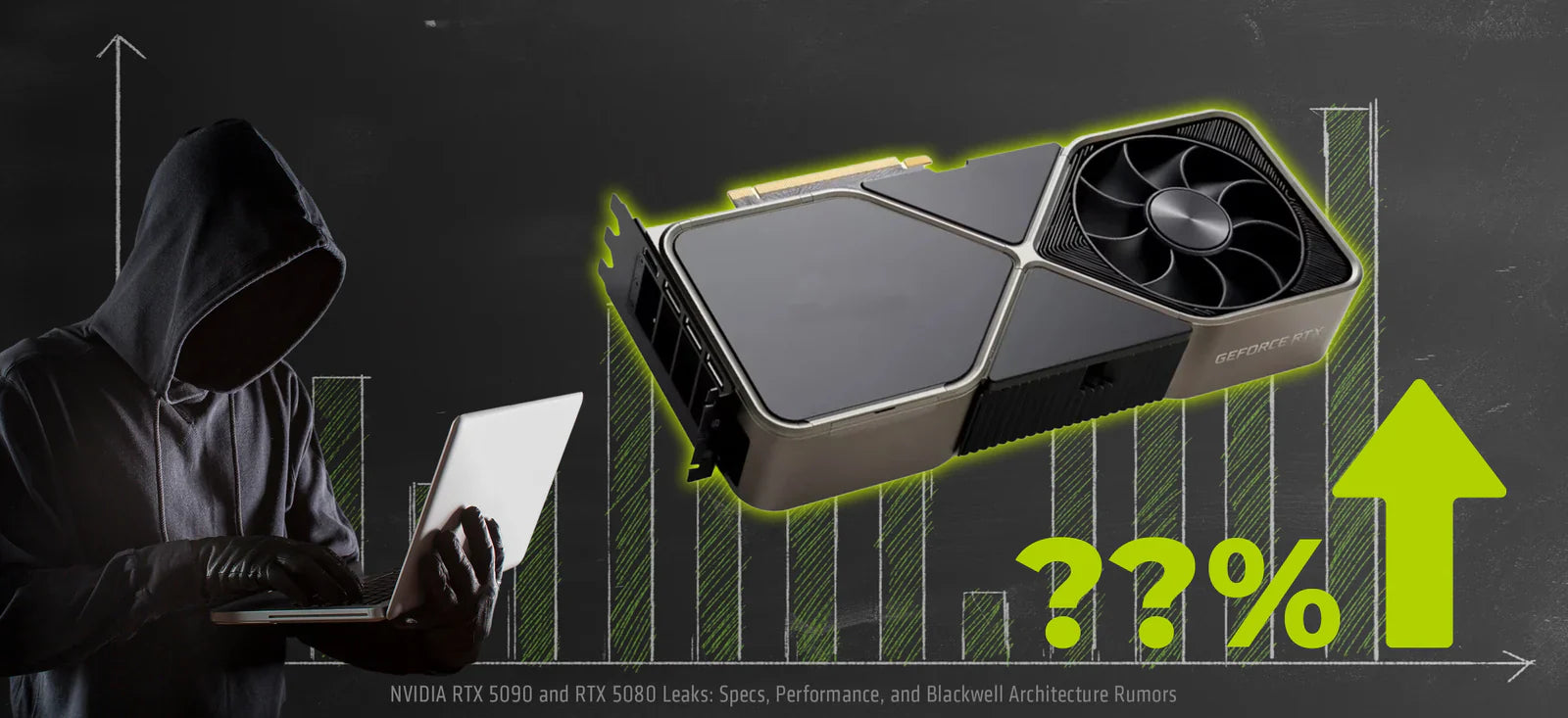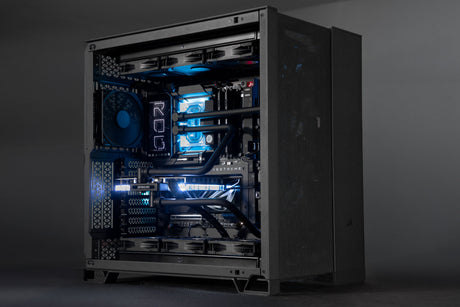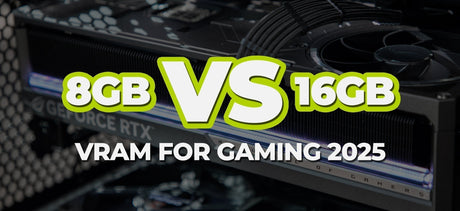NVIDIA’s highly anticipated RTX 50 Series GPUs, codenamed ‘Blackwell,’ promise significant advancements in both gaming performance and AI inferencing. While official details are still under wraps, leaks, industry trends, and insider insights provide glimpses into what these next-gen GPUs might deliver in terms of architecture, memory, power efficiency, and release dates. Please note that all information presented here is speculative, based on rumors and educated guesses. Details are likely to change, and while we’re using potential model names based on NVIDIA’s past naming conventions, nothing is yet confirmed. We’ll keep this blog updated as new and more reliable information becomes available, so check back for the latest developments.

The Blackwell Architecture: A Foundation for High Performance
The RTX 50 Series will be built on the new Blackwell architecture, designed to surpass the current Ada Lovelace GPUs found in the RTX 40 Series. This architecture is expected to introduce enhanced efficiency features, including advancements in real-time ray tracing and AI compute performance. Rumors indicate Blackwell will feature a substantial increase in shader cores and optimized caching, which could improve memory bandwidth and performance under intensive gaming and creative workloads.

GDDR7 Memory and Faster Bandwidth
A major upgrade in the RTX 50 Series is the shift to GDDR7 memory. GDDR7’s projected 36 Gbps bandwidth could represent a substantial improvement over the GDDR6X in the RTX 40 Series. This upgrade will result in improved performance in high-resolution gaming and reduced render times in 3D modeling applications, allowing for seamless performance even at 4K and 8K resolutions. Higher framerates in games will ensure a smoother and more immersive experience.
Model-Specific Details: RTX 5090, 5080, and 5070
RTX 5090: A New Benchmark for Power
The flagship RTX 5090 is shaping up to be NVIDIA’s most powerful consumer GPU to date. According to leaks:
Rumored Specs:
- Shader Units: Rumored 21,760, a leap from the RTX 4090’s 16,384, delivering a significant computing power increase
- Memory: 32GB GDDR7 with a 512-bit interface, providing higher bandwidth for complex, high-fidelity rendering
- Total Graphics Power (TGP): Expected to hit 600W, up from 450W in the RTX 4090, necessitating robust cooling solutions
Pricing Speculation:
The RTX 5090 is rumored to be priced above USD $2,000, aligning with its status as a high-end GPU capable of 8K gaming and advanced AI workloads. This card could set the standard for ultra-high-performance gaming and demanding professional tasks.
So what does that mean for New Zealand? Currently, the "GPU economists" at Computer Lounge estimate the Zotac and Inno3D versions might be priced around NZD $3,999, with the ASUS Strix model possibly reaching NZD $4,799. If these projections hold, the RTX 5090 would represent a serious investment for Kiwi enthusiasts and professionals who need ultra-premium performance.
RTX 5080: Incremental Improvements with GDDR7 Memory
The RTX 5080 brings solid upgrades but on a more moderate scale:
Rumored Specs:
- Shader Units: Rumored 10,752, up roughly 10% from the RTX 4080’s 9,728
- Memory: 16GB GDDR7 on a 256-bit interface, offering improved speeds but with a narrower bandwidth compared to the RTX 5090
- Power Consumption: Expected to hit 350W to 400W
Pricing Speculation:
This model targets gamers seeking high-end 4K performance and creators needing strong but affordable processing power. Estimated to offer a 15-25% performance boost over its predecessor, the RTX 5080 may start in the USD $1,200 - $1,500 range.
According to Computer Lounge, the Zotac and Inno3D versions of the RTX 5080 might be priced around NZD $2,399, while the ASUS Strix model could reach approximately NZD $3,099. If these price projections hold, the RTX 5080 would be an attractive choice for New Zealand enthusiasts looking for top-tier graphics.
RTX 5070: Aimed at the Mid-Range Market
The RTX 5070 is positioned as a mid-range card for 1440p gaming:
Rumored Specs:
- Shader Units: Rumored 6,400, up from the RTX 4070’s 5,888
- Memory: 12GB GDDR7 on a 192-bit interface, delivering a 33% increase in memory bandwidth
- Power Consumption: Expected TGP to hit 250W
The RTX 5070 is designed to provide good performance for mid-range gaming setups, offering improved memory speeds without a massive jump in shader cores. It may come in at a more accessible price point, making it attractive to mainstream gamers.
Increased Power Demands and Cooling Solutions
The power requirements for the RTX 50 Series, especially the 5090, indicate that these GPUs will need more advanced cooling. With rumored power draws reaching 600W for the RTX 5090, NVIDIA is reportedly developing advanced thermal solutions to manage the increased heat output. While lower TDPs are expected on consumer models, robust cooling solutions will be essential to maintain efficient operation.
Release Date Predictions
Rumors suggest that NVIDIA might unveil the RTX 50 Series at CES in January 2025, with high-end models like the RTX 5090 and 5080 expected to be available for purchase soon after. Mid-range models, such as the RTX 5070, and budget options may follow in early 2025, providing options for a range of budgets. Given NVIDIA’s dominance in the market, prices are expected to remain premium, especially for the flagship models.
Conclusion: A New Era for Gamers, Creators, and AI Enthusiasts
The NVIDIA RTX 50 Series GPUs are shaping up to redefine performance expectations, offering advanced ray tracing, high-speed GDDR7 memory, and cutting-edge AI performance. For gamers, this could mean smoother gameplay, faster frame rates, and more realistic graphics. Content creators and AI developers can anticipate faster processing and rendering times, enabling them to tackle more complex projects with ease. As we await official announcements, the RTX 50 Series promises to be a groundbreaking lineup that sets new standards in visual computing.
Looking to stay ahead of the curve? Join our RTX Update Mailer for the latest updates on the Nvidia RTX 50 Series: Sign up here.
If you’re interested in building a custom PC, contact us at Computer Lounge for expert advice and the latest hardware to bring your dream setup to life.









